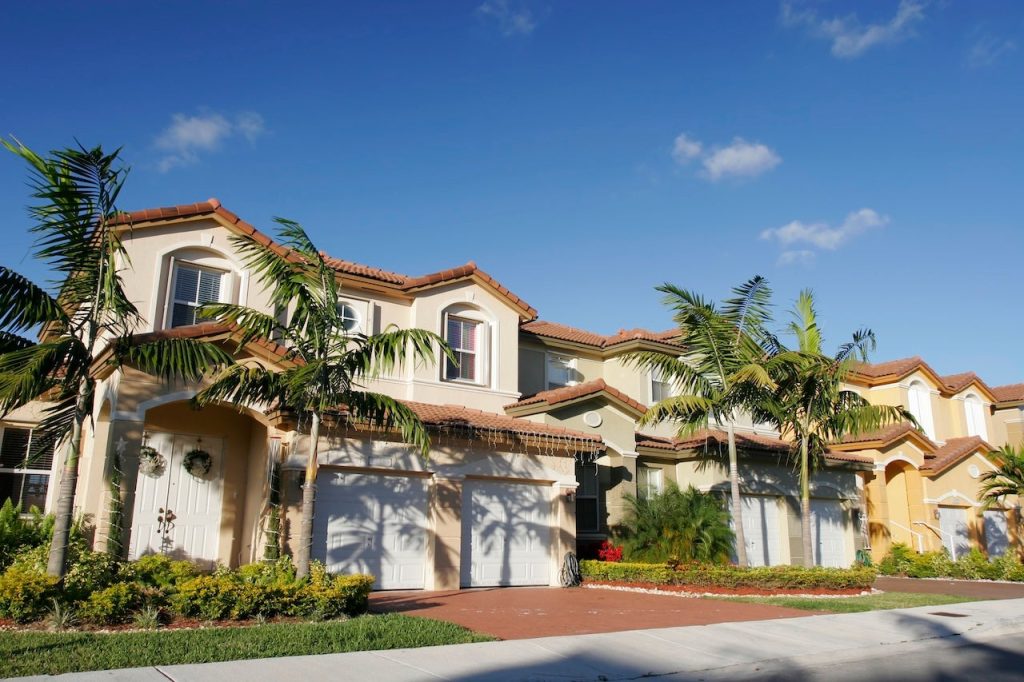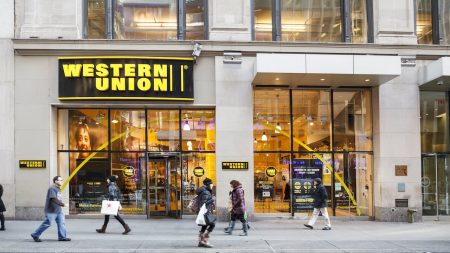Price reductions. Sparsely attended open houses. Homes languishing on the market as the weeks turn to months.
While the U.S. housing market continues to achieve new price records at the national level, some formerly hot corners of the country have experienced slowdowns over the past couple of years. Sun Belt states — which saw an impressive growth spurt during the pandemic — still boast strong job markets and continued population growth, but home prices are cooling.
“Some markets in Texas and some markets in Florida are seeing declines,” said Lawrence Yun, chief economist at the National Association of Realtors.
One Florida example is the Tampa Bay market — it’s the only one of the country’s 20 largest metro areas to consistently report year-over-year price declines on the S&P CoreLogic Case-Shiller index, including a 1.46 percent drop from February 2024 to February 2025. And just south of Tampa, in the North Port-Bradenton-Sarasota metro area, home prices fell 13 percent from the first two months of 2024 to the first two months of 2025, according to Redfin data.
Meanwhile, in Austin — a pandemic boomtown that has now lost a bit of its luster — the Zillow Home Value Index released in mid-April shows that prices were down 4.5 percent in the past year.
What’s driving these price declines in markets that were once so popular with homebuyers? Especially when home prices nationwide are still on the rise? Here’s what real estate agents — and hard data — tell us.
Why are home prices falling? Partly due to new construction
How did these low-tax, high-growth darlings of the pandemic housing boom fall from grace? Housing economists point to an obvious factor from Econ 101: Builders are delivering plenty of new homes in the Austin and North Port-Bradenton-Sarasota markets. “Construction has been very, very active,” Yun said.
In fact, a Bankrate analysis of U.S. Census Bureau data shows that those two markets have the fastest pace of housing construction among metro areas with more than 900,000 residents.
The North Port-Bradenton-Sarasota metro area issued nearly 15,000 residential permits in 2024, according to the Census. That equates to a pace of 16 permits per 1,000 residents, the highest level among metro areas of more than 900,000.
Austin-area municipalities, for their part, issued more than 32,000 building permits, a rate of 13 permits per 1,000 residents that ranks second among large metro areas. By contrast, prices are rising in areas in the Northeast and Midwest where building activity is muted.
Intriguingly, this combination of building boom and price slowdown is both good and bad for consumers. Softer prices and longer marketing times are painful for home sellers, certainly. But for buyers, a retreat is welcome news — in contrast to the frenzied seller’s market of a few years ago, homebuyers can now take their time and conduct their due diligence.
Becki Weston of Beach Drive Realty was putting an open house sign in front of a listing in St. Petersburg, in the Tampa Bay area, on a recent Sunday, and she recalled how crazy her market was just a few years ago.
“People were waiving inspections and contingencies. I was like, ‘That’s not wise,’” Weston said.
Bradenton: ‘Quiet — real quiet’
The North Port-Bradenton-Sarasota metro area, along Florida’s Gulf Coast, long has been a haven for retirees and snowbirds from up north. New residents continue to flock to the area, which boasts plenty of buildable land.
Builders have taken advantage. The Lakewood Ranch community in Sarasota ranked No. 2 nationally among master-planned communities, with 2,210 sales of new homes in 2024, according to John Burns Research & Consulting.
Lakewood Ranch isn’t the only place in this metro area where new homes are going up. As a result, sellers are competing not just with existing homes but with newly constructed homes.
Richard Quinn, an agent at Keyes Company Realtors in Bradenton, hosted an open house in the River Strand neighborhood on a recent Sunday. He noted that the price of the three-bedroom, two-bathroom home, which has a saltwater pool and spa out back, had been cut from $665,000 to $599,995.
Even so, after two months on the market and two price reductions, Quinn said he was still waiting. The lack of names on the open house sign-in sheet illustrated the reality of the market, even for nice properties in good condition. “It’s been quiet — real quiet,” he said.
Austin: No longer ‘the popular girl at the party’
This tech hub experienced big price gains for decades, a run-up that culminated early in the pandemic. But prices here softened in 2022 and have yet to recover, said Lilly Rockwell, a broker associate at Compass.
“Since 1999, Austin was kind of the popular girl at the party,” Rockwell said. “Prices didn’t go down during the Great Recession. So this is a shock to the system for a lot of people.”
While Austin’s job market remains strong, new construction is keeping prices in check.
“If you bought in a new-construction community back in 2022, you’d be losing money by selling right now,” Rockwell said. “You’re competing against all this new inventory.”
But, she said, buyers need to understand that the soft market conditions don’t apply to every house or every neighborhood. Some houses are still moving fast, in spite of broadly soft conditions.
“Our market is very unpredictable,” she said. “Some homes, especially in sought-after markets, are selling quickly. Others are sitting on the market for months. It’s very hyperlocal.”
Buying tips for a cooling market
If you’re shopping for a home in a market where prices are falling, here are some things to keep in mind:
- Take your time: In many areas and for much of the past five years, buyers have felt pressured by a fast-moving market. Now that homes are sitting on the market for longer, buyers can take a more measured approach.
- Build in safeguards: During the pandemic, buyers had so little leverage that they were doing things like waiving home inspections. You no longer need to do that – in fact, you can insist on waiting for the results of an inspection.
- Feel free to negotiate: During the boom market, buyers had little choice but to make offers above the seller’s asking price. These days, you have more room to drive a hard bargain.
- Change your mindset: The housing boom of the past few years made buyers feel like geniuses — after they bought, prices just kept rising. But in slowing markets, it’s possible that home values could actually decline over time. Make sure your buying decision isn’t based on an expectation of a big jump in value over the next year or two.
Read the full article here









